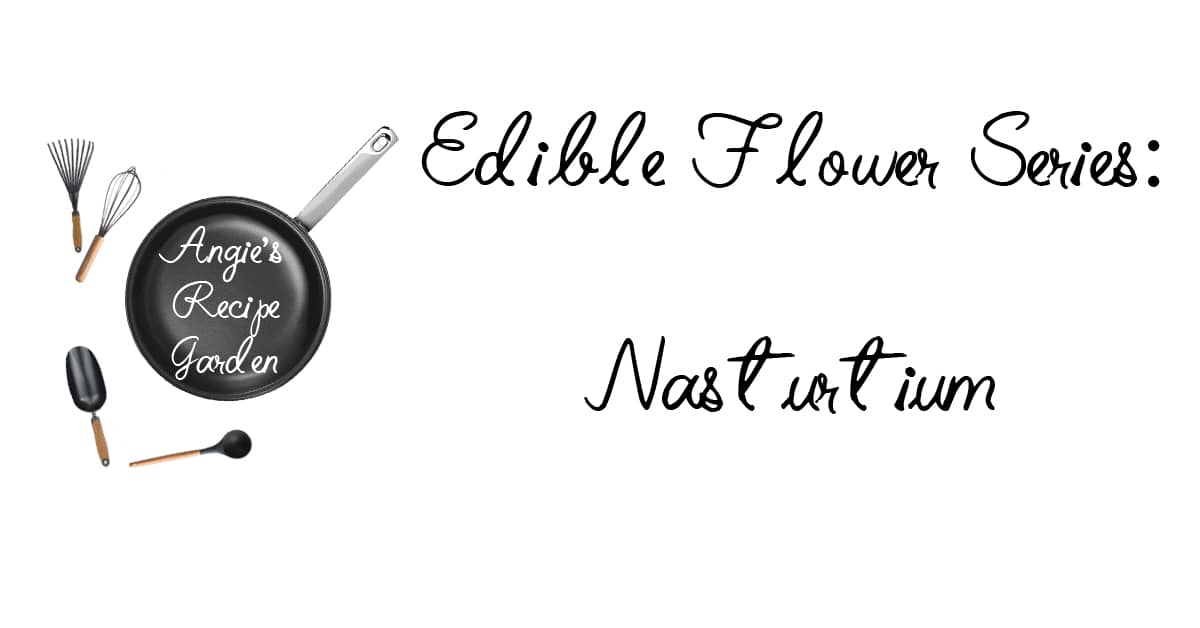Nasturtium is available in many colors an help keep squash bugs and aphids away from your plants
If you have squash bugs and aphids as much as I do, you may want to plant colorful nasturtium in your garden. As part of my edible flower series, I’ll share with you why you should grow nasturtium.
Angie’s Top Reasons To Plant Colorful Nasturtium
1. Attract squash bugs & aphids so they don’t attach your other plants
When used as a companion plant, nasturtium attracts squash bugs and aphids. Due to the nasturtium attracting these bugs, your squash, tomatoes, kale, etc. are saved from these destructive bugs.
2. Add a beautiful pop of color to your garden
While I tend my garden, I love seeing colorful flowers. The contrast of a bright color against a mostly green backdrop is so beautiful. Not to mention the dark green leaves of the nasturtium are beautiful.
3. Black pepper substitute
In general I’m always looking for things I can grow and use versus buying. Nasturtium is a fun way to incorporate black pepper taste in my cooking. The stems and leaves of the nasturtium have a black pepper taste! The flower itself isn’t as intensely peppery as the leaves, but does add color to salads.
4. Attract pollinators
Nasturtium attracts bees and even hummingbirds to your garden. These pollinators are essential to your garden success. Without pollinators, your squash flowers would go un-pollinated and may not produce fruits.





How To Plant Colorful Nasturtium
First and foremost you will need to scarify the seeds and soak in water for 8 hours prior to planting. To scarify a seed, you can use sandpaper to take off the thick layer and expose the inside lighter color layer. Scarification helps speed up germination.
Next, you will want to plant the seeds about 1/2″ deep and 12″ apart. You can start the seeds indoors 4-6 weeks before the last freeze date in your area.
I found nasturtiums to be very low maintenance, I grew mine in full sun, and they flourished. Next season I think I’ll grow in a bucket so I can get a “waterfall’ effect. They can tolerate a little drought, just be sure to keep the soil moist.
While you nasturtium grows, pick off the dead flowers. Harvest leaves and flowers as needed. I found I could harvest a few small bunches of leaves a week, and it didn’t do any harm to the plant.
Now it’s time for me to get back to garden planning, but if you are looking for more garden information, check out all of my garden posts here.
Did You Miss An Edible Flower Post? Here’s All The Posts:
- Best Edible Flowers To Grow Series announcement
- Grow Vibrant Blue Borage This Year
- Make Your Garden Interesting This Year By Adding Edible Flowers Like Chives
- Plant Colorful Nasturtium To Combat Bugs
- Grow What Pollinators Love Beautiful Bee Balm
- Offer Pollinators A Place To Land With Calendula
- Beautiful Viola Flowers Will Make You Want To Bake More
- Grow Pansies For Edible Flowers And Limited Maintenance
Follow Me On Social Media To Know When The Next Post Is Live!
Following me on social sites is the easiest & fastest way to not miss a post!


